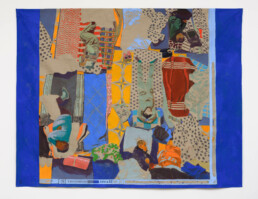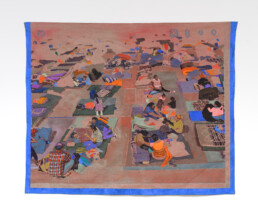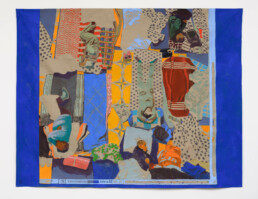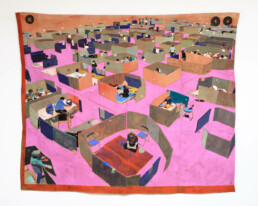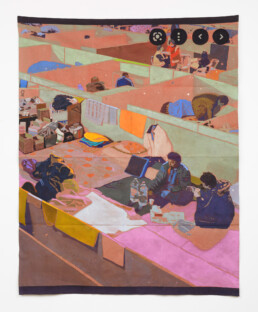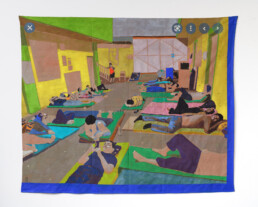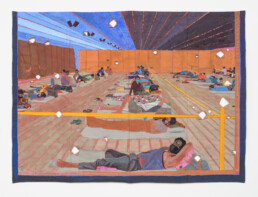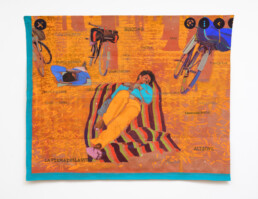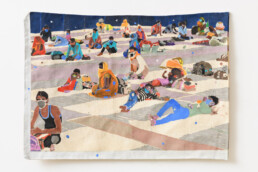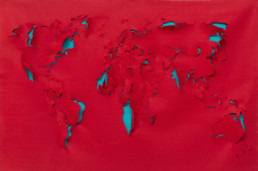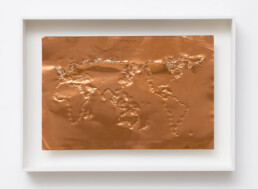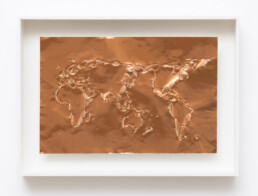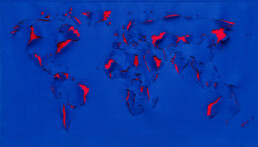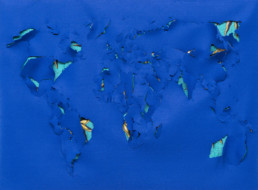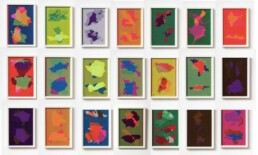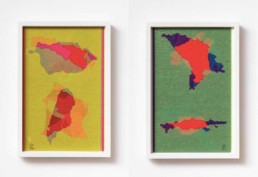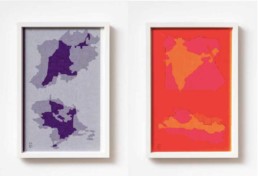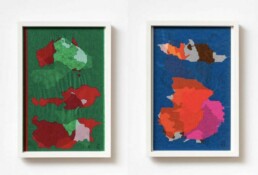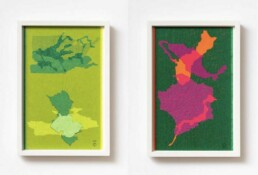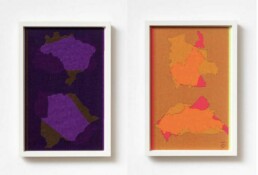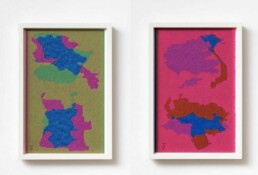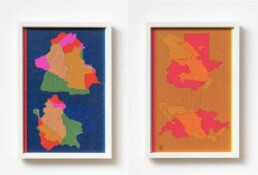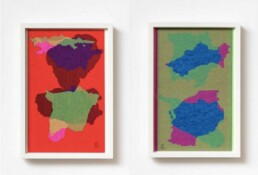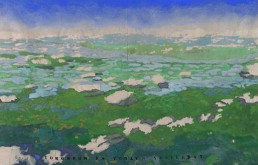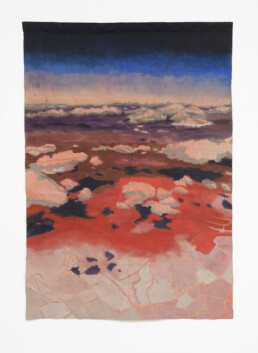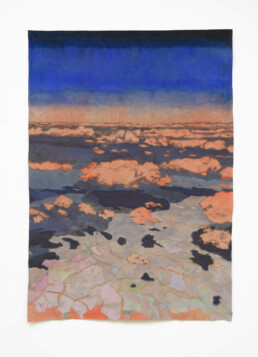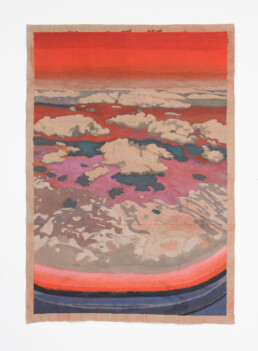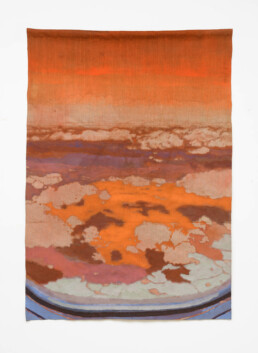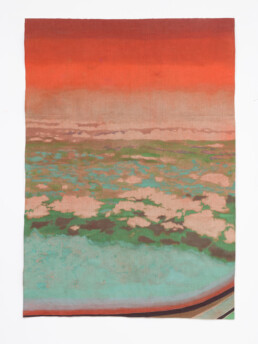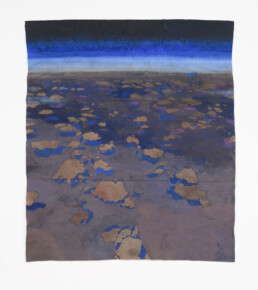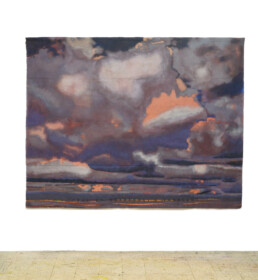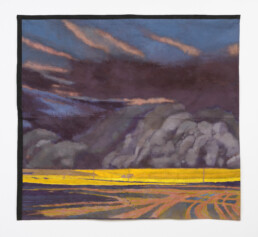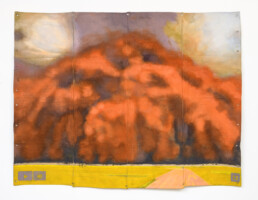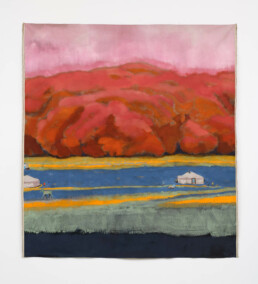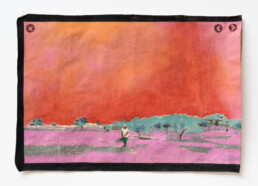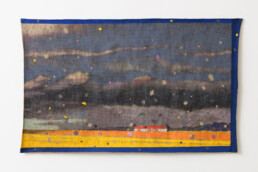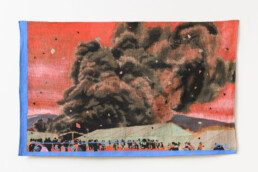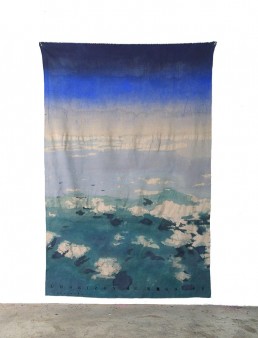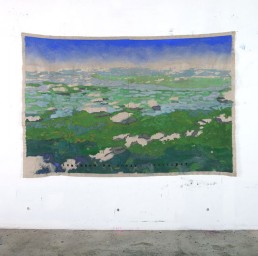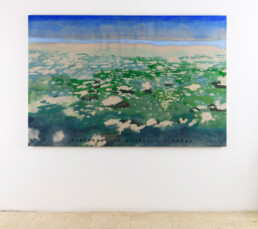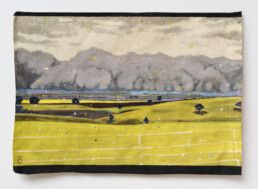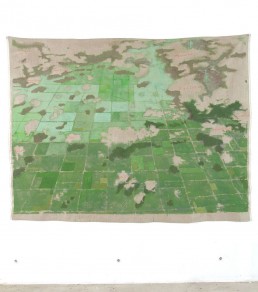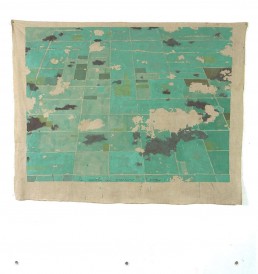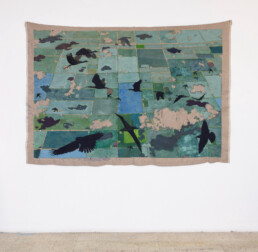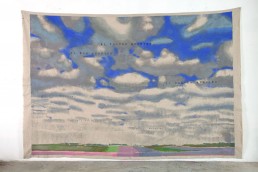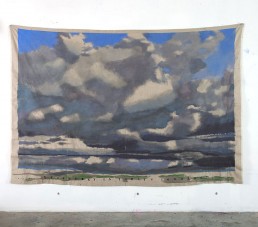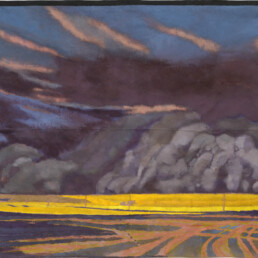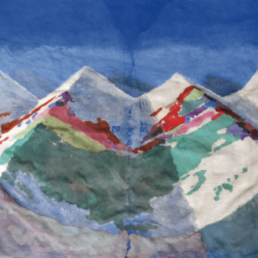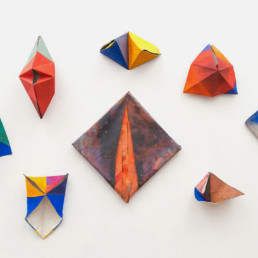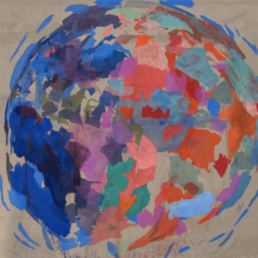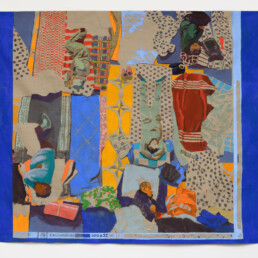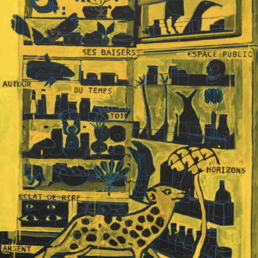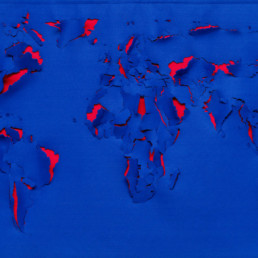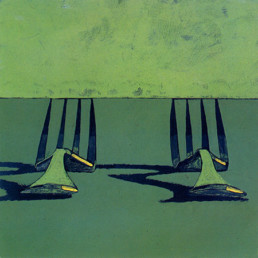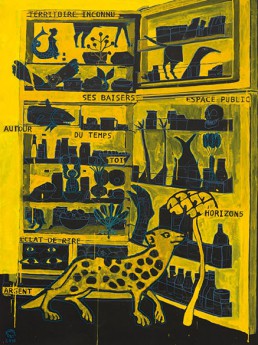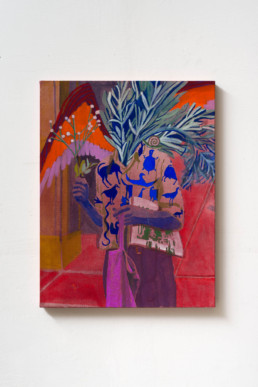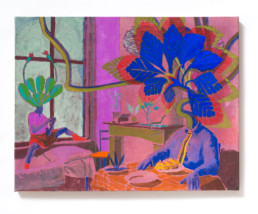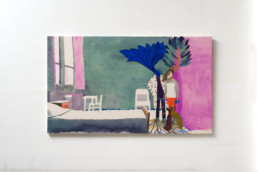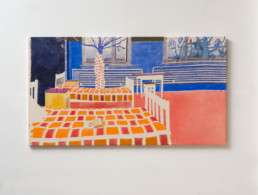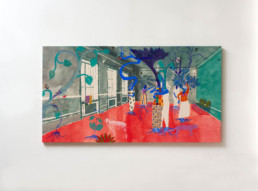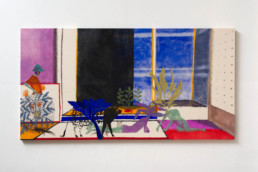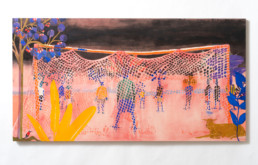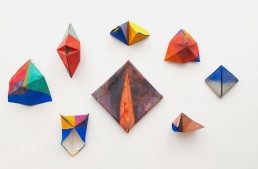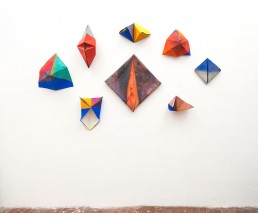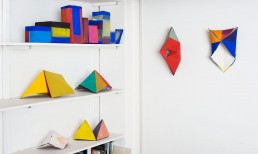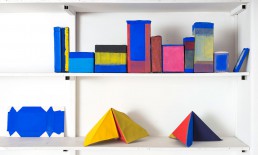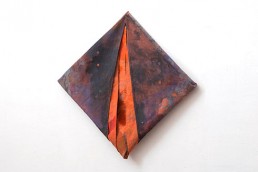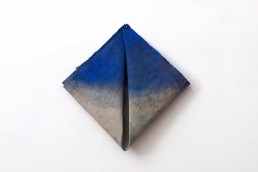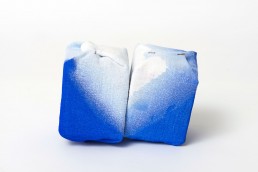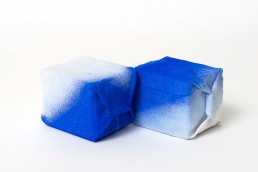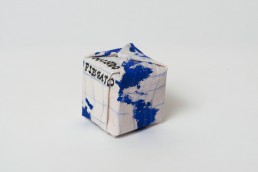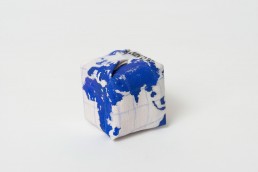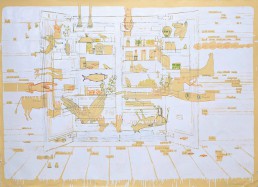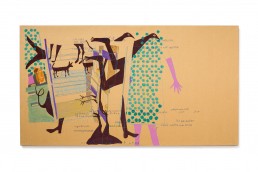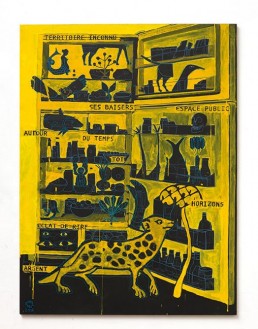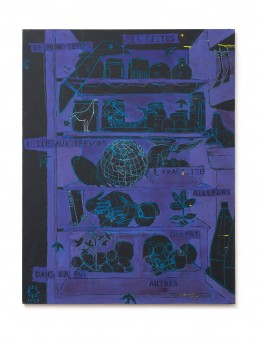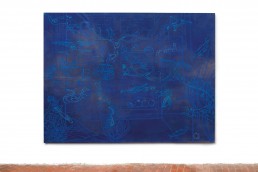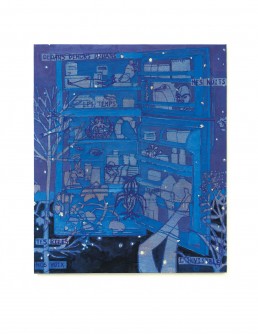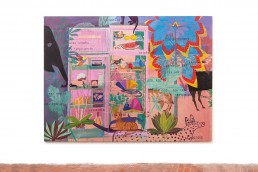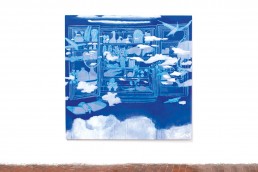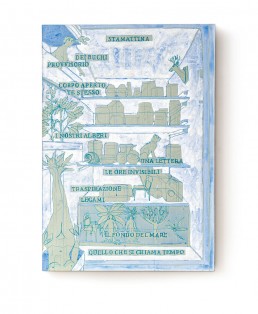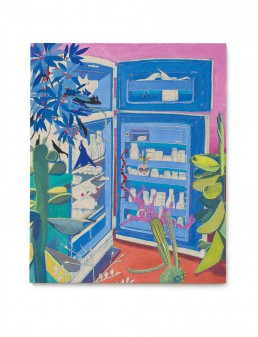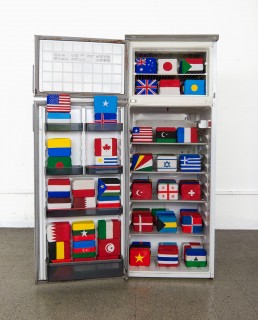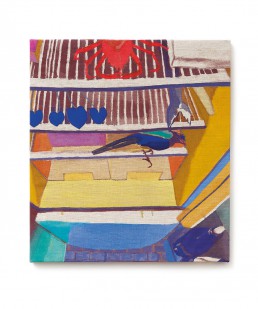Parking- People
What are the images and what do they do?
The exhibition project sprang from the relationship between the device most often used today for the utilization of images, the Internet, and our perception.
I have noticed that I often close, with a click, topical images that I have difficulty looking at in order to move on to the following ones, despite the fact that the subject interests me a lot.
“Each to his own place”, as Georges Perec says, leaves no room for chance or difference. This is the violence of a “normal” world where everyone stays “in their place”.
Selecting and transposing these images into painting opens up to a different temporality.
Painting obliges me to stay with what I see, to interact.
Painting takes time and restores a body to those that society would like to be invisible.
It’s about going into that space between the visible and that which the visible sends back to me.
The screen transmits information in a homogeneous way. In my painting, on the other hand, there are interruptions, parts without pigment, spaces left to the “invisible”.
In most of the works on display, before starting to paint, I placed pieces of scotch tape on the surface of the canvas which I then detached and moved during the work. This device allows me both to shift pictorial information and to create empty spaces.
I fold the canvas, reopen it and leave the folds visible, I go from a flat image under glass to three-dimensional matter.
What distance do I decide to keep from this reality that surrounds me?
While I was painting, I understood why it was so difficult for me to look at these images: for me time is precious, while migrants’ time has no value.
The violence lies in considering the value of other people’s time to be different.
Cosa sono e fanno le immagini?
Il progetto della mostra nasce dalla relazione fra il dispositivo oggi più usato per la fruizione di immagini, il web, e la nostra percezione.
Mi sono accorta che spesso chiudo con un click immagini d’attualità che ho difficoltà a guardare per passare alle seguenti, malgrado l’argomento m’interessi molto.
“A ciascuno il suo posto”, come dice Georges Perec, non lascia spazio né al caso né alla differenza. Questa è la violenza di un mondo “normale” dove ognuno resta “al suo posto”.
La disposizione dei corpi nello spazio mi interroga.
Selezionare e trasporre queste immagini in pittura, apre ad una temporalità diversa.
La pittura mi permette a stare con quello che vedo, di interagire.
La pittura richiede tempo e restituisce corpo a quelli che la società vorrebbe invisibili.
Si tratta di andare in quello spazio fra il visibile e ciò che quel visibile fa risuonare in me.
Lo schermo trasmette informazioni in modo omogeneo. Nella mia pittura, invece, ci sono interruzioni, vuoti di pigmento, spazi lasciati al “non visibile”.
Nella maggior parte delle opere esposte, prima d’iniziare a dipingere, ho posizionato pezzi di scotch sulla superficie della tela che ho poi staccato e spostato durante il lavoro. Questo dispositivo permette sia di fare slittare informazioni pittoriche, sia di creare vuoti.
Piego la tela, la riapro e lascio visibili le pieghe, passo da un’immagine piatta sotto vetro a una materia tridimensionale.
Quale distanza decido di avere con questa realtà che mi circonda?
Mentre dipingevo, ho capito perché mi era così difficile guardare queste immagini: per me il tempo è prezioso, mentre il tempo dei migranti non ha valore.
La violenza sta nel constatare diverso il valore del tempo degli altri.
Skies
Living in Storms
‘In the life of a man, the house thrusts aside contingencies, its council of continuity are unceasing. Without it, man would be a dispersed being. It maintains him through the storm of the heavens and through those of life.’
[1]Gaston Bachelard, The Poetics of Space [1957], PUF, 1961, pp.6-7.
Abitare la bufera
«La casa, nella vita dell’uomo, travalica le contingenze, moltiplica i suoi suggerimenti di continuità: se mancasse, l’uomo sarebbe un essere disperso. Essa sostiene l’uomo che passa attraverso le bufere del cielo e le bufere della vita»
Gaston Bachelard, La poétique de l’espace [1957], PUF, 1961, p.34-35., edizione italiana Poetica dello spazio, Bari, Dedalo 2006, pag. 35, traduzione di Ettore Catalano.
Habiter les orages
«La maison, dans la vie de l’homme, évince des contingences, elle multiplie ses conseils de continuité. Sans elle, l’homme serait un être dispersé. Elle maintient l’homme à travers les orages du ciel et les orages de la vie.[1]»
[1] Gaston Bachelard, La poétique de l’espace [1957], PUF, 1961, p.34-35.

